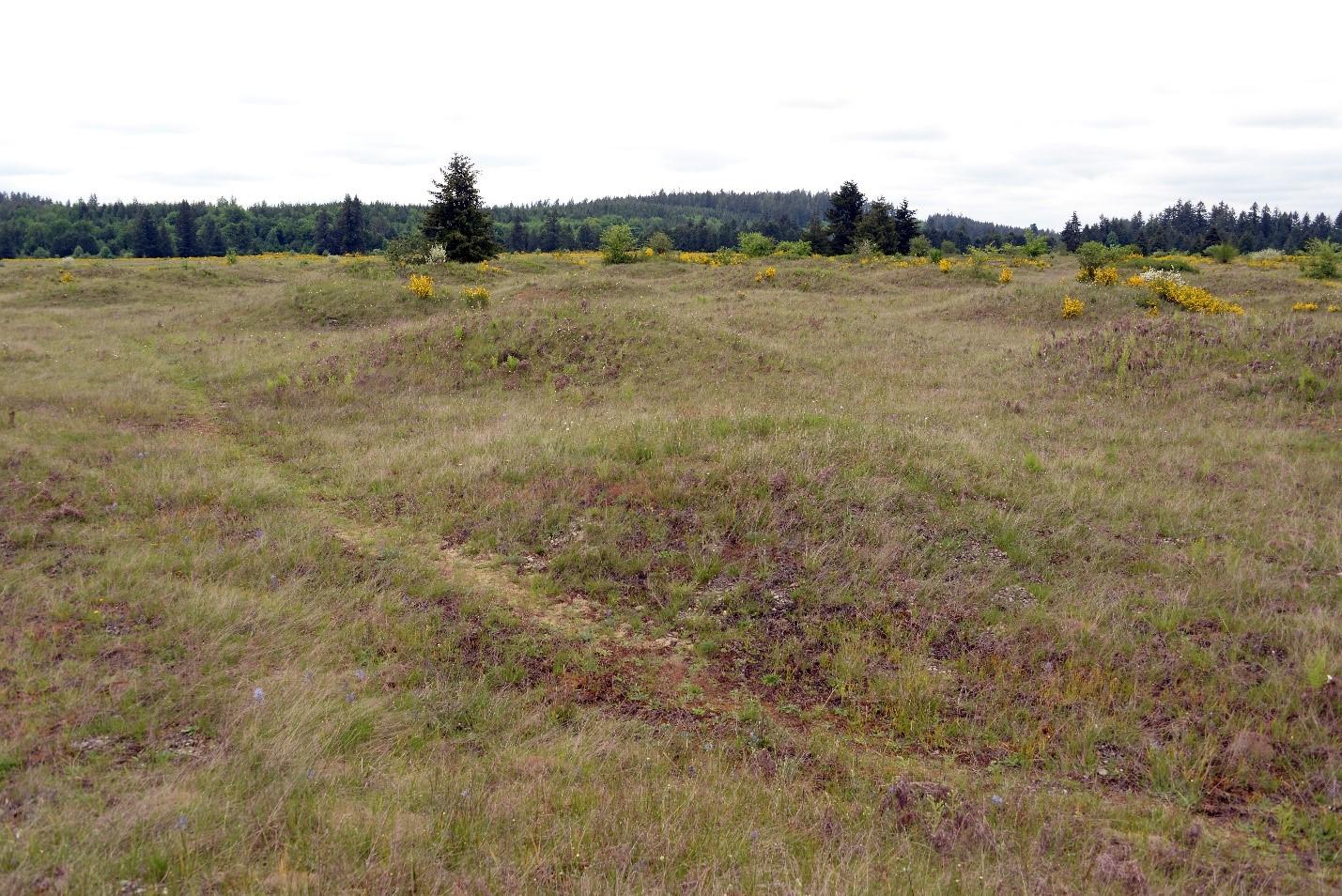Photos
Click to display full size or right-click to save to your device.
ARCHIVED NEWS RELEASE
This document is provided for archival purposes only. Archived documents
do not reflect current WDFW regulations or policy and may contain factual
inaccuracies.
News release July 25, 2023
Media contact: Eryn Couch, 360-890-6604
OLYMPIA – The Washington Department of Fish and Wildlife (WDFW) announced today it will conduct a forest thinning project to restore prairie habitat on the West Rocky Prairie Unit of the Scatter Creek Wildlife Area near Tenino.
The 119-acre forest thinning project will begin Aug. 1 and is anticipated to last about four months. The project will improve forest health by managing the densities of Oregon white oak, Douglas fir, and other tree species in the area to align closer to healthy, historical habitat conditions. This project will preserve some of south Puget Sound’s most impressive oak trees and select Douglas fir in areas to support old-growth forest conditions.
“Oak trees on the prairie die without adequate sunlight and are currently being outcompeted by over-abundant tree species such as Douglas fir, maple, and Oregon ash,” explained Bill Kronland, Scatter Creek Wildlife Area manager. “Thinning select trees in this area will allow more sunlight to reach the forest floor, promoting the growth of native Oregon white oak and supporting desired habitat conditions.”
Improved habitat on the management unit will benefit species including Mazama pocket gophers, vesper sparrow, and Puget blue and Taylor’s checkerspot butterflies. The project has been designed to meet objectives outlined in the Department’s Management Strategy for the Washington State Department of Fish and Wildlife's Forests.
“Historically, prairies and oak woodlands were more prominent on the West Rocky Prairie Wildlife Area Unit than they are today,” Kronland said. “These habitats will continue to be lost over time without active management. We appreciate the public’s patience during this project as we steward this area to support the West Rocky Prairie Unit ecosystem for the long term.”
In addition to improving forest health, the project will maintain over three miles of existing forest roads, build almost two miles of permanent roads, and decommission approximately one-half mile of existing road to support restoration.
The Department anticipates a temporary closure to the 143rd Avenue parking area and access road for approximately two weeks in late August or early September for public safety during project work. WDFW will announce temporary closure updates as they become available.
WDFW land managers emphasize that, while forest conditions immediately after thinning may not look like everyone’s perception of a thriving forest, this is a normal step in the process to restoring healthy forest habitat. Following forest thinning, the Department will re-plant native species in the project area. WDFW encourages visitors to continue to Recreate Responsibly and stay on roads and trails to protect sensitive habitat and support the growth of these young trees.
Puget Sound prairies are one of the country’s rarest ecosystems and Oregon white oak is Washington's only native oak. Retreating glaciers approximately 15,000 years ago left behind gravelly soils that dry out quickly in the summer, creating prairies and open oak savannas. Native American tribes have used fire for thousands of years to maintain these prairie habitats to support harvesting for acorns, bulbs, and medicinal plants.
Prairies and Oregon white oak woodlands are used by an abundance of mammals, birds, reptiles, and amphibians. Many invertebrates, including moths, butterflies, gall wasps, and spiders, are found exclusively in these habitats. Of the more than 200 wildlife species that use prairies and oak woodlands, several are state and/or federally listed as sensitive, threatened, endangered, or candidates for listings.
Since 2014, WDFW has used a variety of forest management tools to mitigate risks and restore forests to their historic, healthier states. Restored forests decrease severe wildfire risk, improve health and habitat for fish and wildlife species, and protect homes and local communities. Of forest management tools available, the Department focuses mostly on forest thinning, prescribed burning, and creating fuel breaks.
WDFW manages more than a million acres of land and hundreds of water access areas throughout the state.
By actively managing lands, restoring habitats, and preserving wild places, the Department serves as stewards for Washington’s natural places, protecting the state’s land and water for its human and wildlife.
